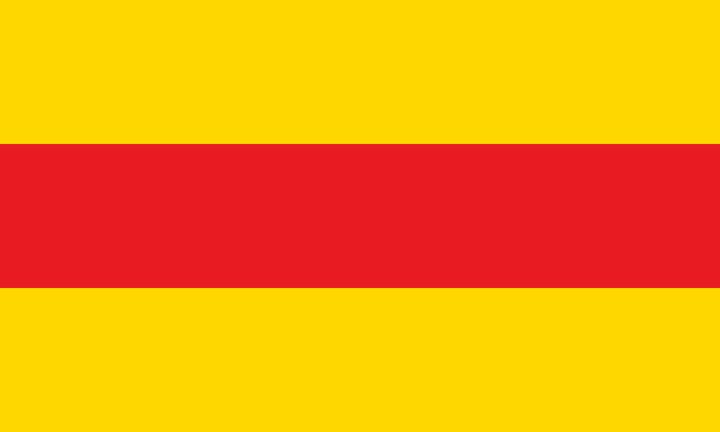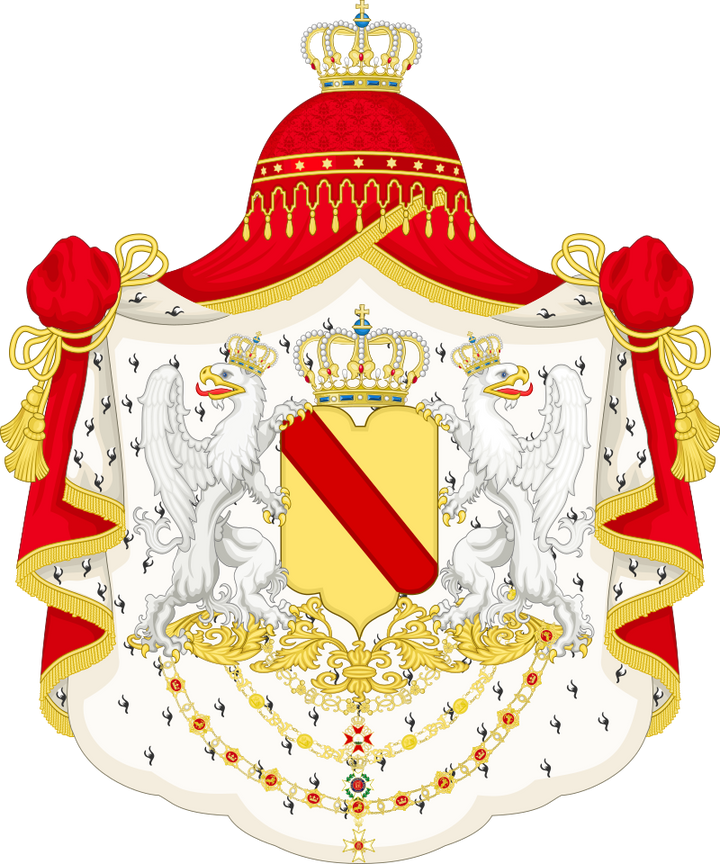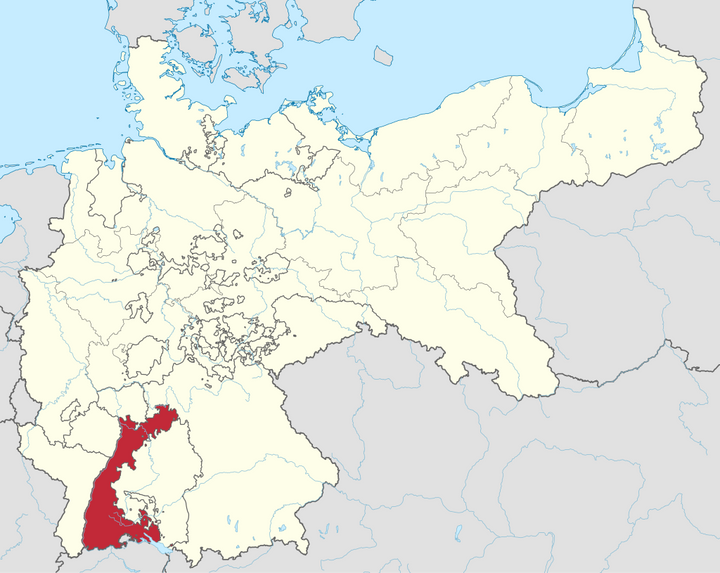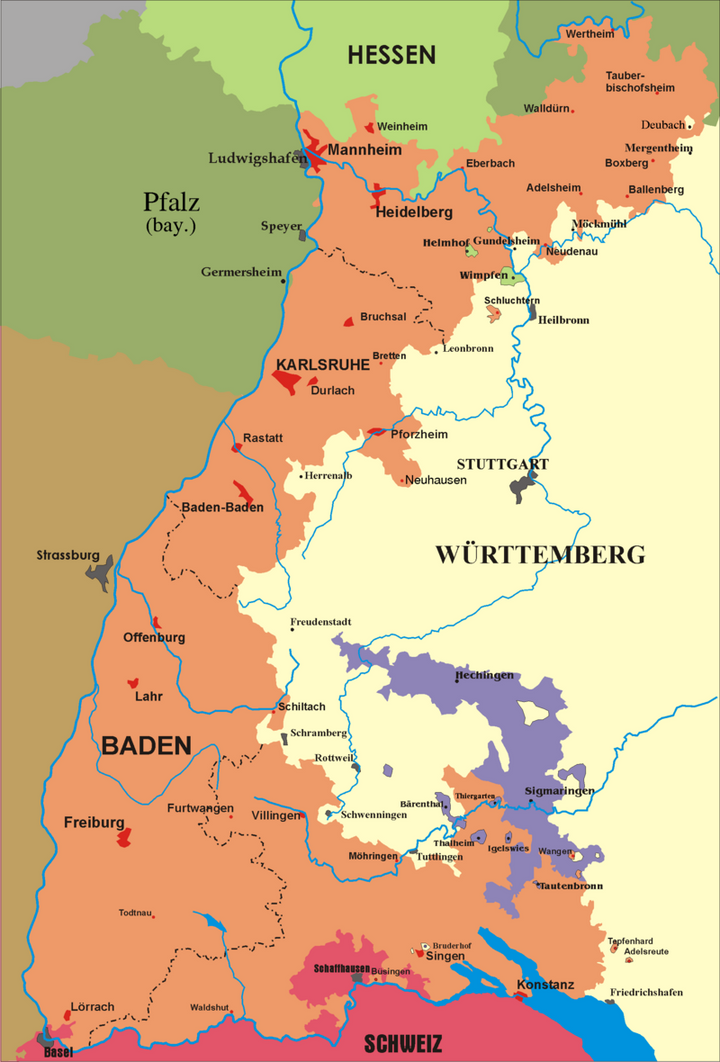Baden (Großherzogtum Baden)
CLICK HERE FOR ALL PRODUCTS RELATED TO BADEN
Basic Information
- Official Name: Grand Duchy of Baden (Großherzogtum Baden)
- Capital: Karlsruhe
- Motto: "Fidelitas" (Fidelity)
- Established: 1806 as a grand duchy (earlier as a margraviate in 1112)
- Dissolution: Transitioned to the Republic of Baden in 1918 following the abdication of Grand Duke Friedrich II.
-
Key Symbols:
- Coat of Arms: Features a golden shield with a red diagonal stripe.
- Flag: Red and yellow horizontal stripes.
Geographical Overview
-
Location:
Baden was located in southwestern Germany, bordered by France to the west, Switzerland to the south, Württemberg to the east, and Bavaria to the northeast. -
Size:
A smaller but strategically located state, known for its fertile Rhine Valley and Black Forest region. -
Land Features:
- Rhine River: Formed Baden’s western border and served as a vital trade route.
- Black Forest (Schwarzwald): A mountainous region of dense forests and picturesque villages.
- Lake Constance (Bodensee): Shared with Switzerland, this lake enhanced trade and tourism.
Historical Timeline
-
Early Baden:
- 1112: The Margraviate of Baden was established by Hermann II of Zähringen.
- 1535–1771: The territory was divided into Baden-Durlach and Baden-Baden, later reunified under Charles Frederick.
-
Grand Duchy of Baden (1806–1918):
- 1806: Elevated to a grand duchy under Napoleon’s influence during the reorganization of German states.
- 1815: Joined the German Confederation after Napoleon’s defeat.
- 1871: Baden became part of the German Empire while maintaining internal autonomy.
-
Decline (1918):
- The abdication of Grand Duke Friedrich II during the German Revolution ended the monarchy, and Baden became a republic.
Notable Rulers and Leaders
- Charles Frederick (1738–1811): Unified Baden and modernized its administration, earning the title of Grand Duke.
- Leopold (1830–1852): Reformed Baden’s legal and educational systems, introducing liberal policies.
- Friedrich I (1852–1907): A progressive ruler who supported the unification of Germany under Prussia.
- Friedrich II (1907–1918): The last Grand Duke, abdicated peacefully during the German Revolution.
Military and Political Strength
-
Military Contributions:
- Baden contributed troops to the German Imperial Army, known for their discipline and adaptability.
- Played a significant role in the Franco-Prussian War (1870–1871).
-
Political Role:
- Baden was among the more liberal states in the German Empire, with progressive policies on civil rights and religious tolerance.
- Supported Prussia’s leadership in unifying Germany.
Cultural Contributions
-
Architecture:
- Karlsruhe Palace: A Baroque masterpiece and the political center of Baden.
- Heidelberg Castle: A symbol of German Romanticism, though partially in ruins.
-
Arts and Music:
- Baden supported composers like Johannes Brahms and Carl Maria von Weber.
- The state was a hub for theater and opera, particularly in Karlsruhe and Heidelberg.
-
Education and Science:
- Home to Heidelberg University, one of the oldest and most prestigious universities in Europe.
- Baden fostered advancements in legal studies, science, and medicine.
-
Cuisine and Wine:
- Famous for its white wines, particularly Rieslings from the Rhine Valley.
- Signature dishes include Badischer Schäufele (smoked pork shoulder) and Black Forest Cake.
Fall of Baden
-
World War I (1914–1918):
- The war brought economic hardship and political unrest to Baden.
-
German Revolution (1918):
- The abdication of Grand Duke Friedrich II led to the establishment of the Republic of Baden.
-
Post-WWII (1945):
- Baden was divided into French and American occupation zones before merging with Württemberg in 1952 to form Baden-Württemberg.
Connections to Products
-
Military Memorabilia:
- Baden Army medals like the Order of the Zähringer Lion, awarded for distinguished service.
- Baden infantry and cavalry helmets, with their unique crests and designs.
-
Cultural Artifacts:
- Porcelain and glassware from the Baden region, known for their elegance and craftsmanship.
- Historical maps and documents tied to the Grand Duchy’s governance.
-
Architectural Replicas:
- Miniature models of Karlsruhe Palace or Heidelberg Castle.
-
Wine and Culinary Items:
- Memorabilia related to Baden’s wine culture, including vintage bottles, corkscrews, and wine maps.
- Recipe books and tools for creating traditional Badenese dishes.









